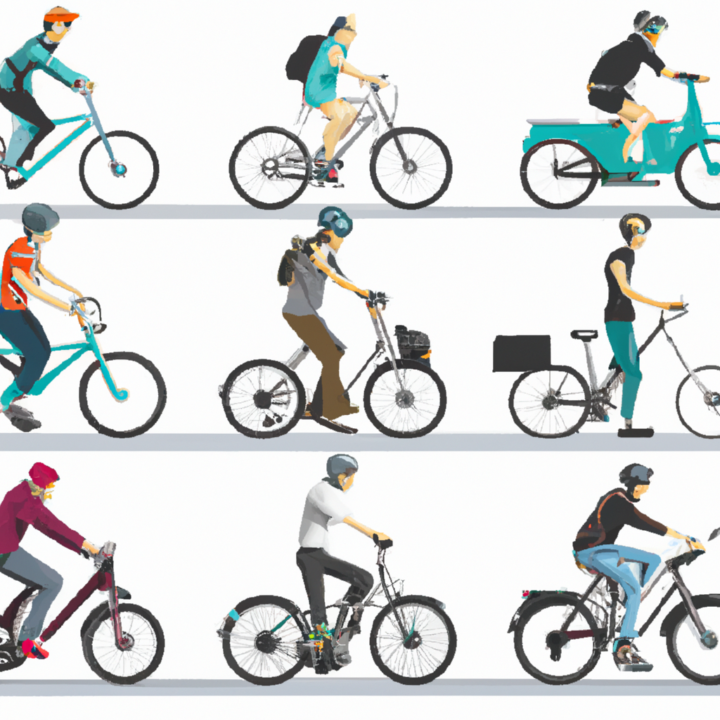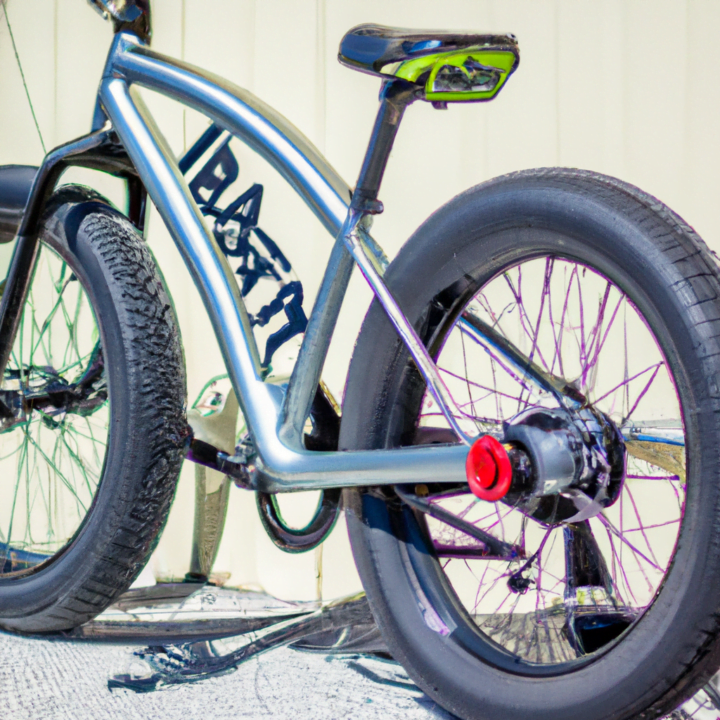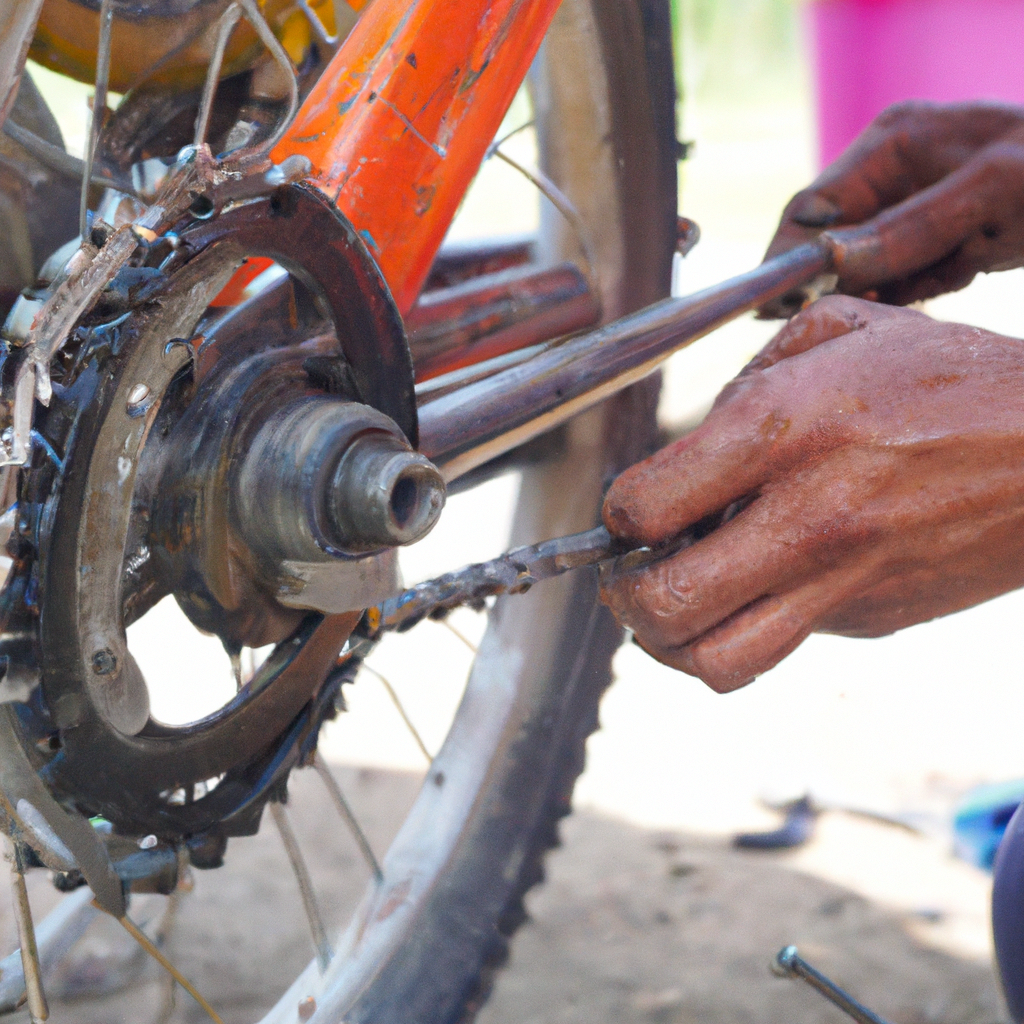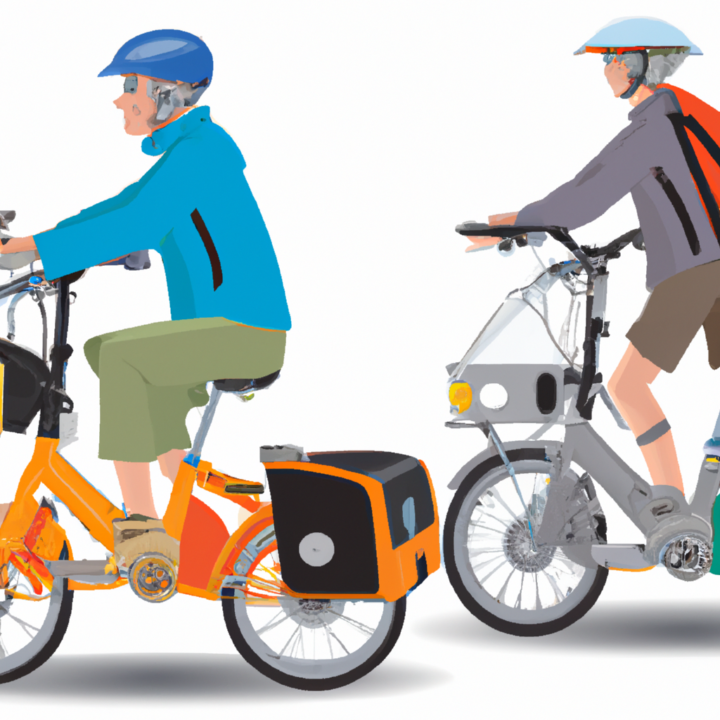Electric Bike Maintenance Tips: Keep Your E-Bike in Top Condition
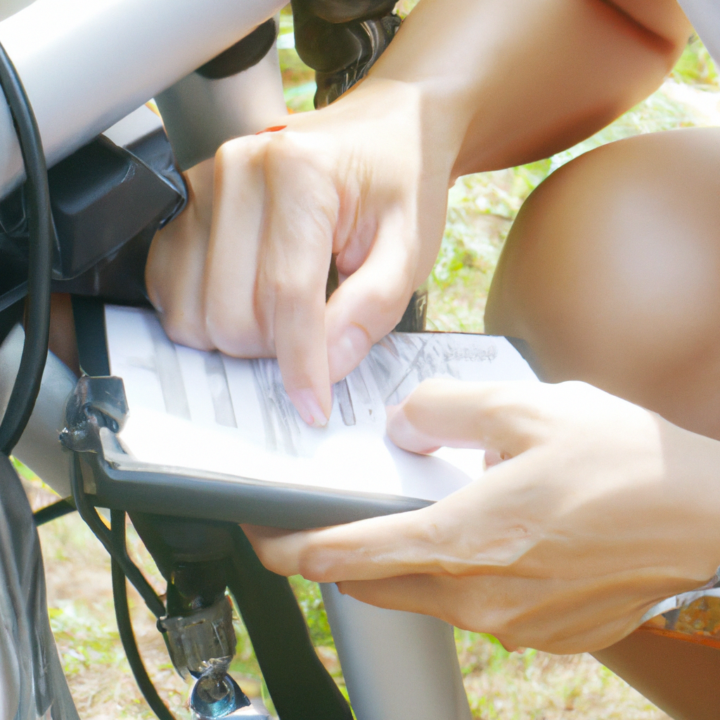
Electric bikes have become increasingly popular in recent years, and for good reason. They are eco-friendly, cost-effective, and convenient. However, like any other mode of transportation, electric bikes require regular maintenance to ensure they are running smoothly and safely. In this article, we will provide some essential tips for maintaining your electric bike and keeping it in top condition.
Understanding Electric Bikes Before diving into maintenance tips, it’s essential to understand the basics of electric bikes. Electric bikes have a battery-powered motor that assists the rider’s pedaling. They have a range of speeds and can travel at up to 28 mph. Electric bikes can be used for commuting, leisure, and exercise. They are also a fantastic option for those who want to reduce their carbon footprint.
Pre-Ride Checks One of the most important things you can do to maintain your electric bike is to perform pre-ride checks. Before each ride, check the tire pressure, brakes, and chain tension. Ensure that the battery is fully charged, and the lights are working correctly. By performing these checks, you can identify any issues before they become major problems.
Key Takeaways
- Understanding the basics of electric bikes is essential for proper maintenance.
- Performing pre-ride checks can help identify issues before they become major problems.
- Regular maintenance, such as cleaning the chain and checking the battery, is crucial for keeping your electric bike in top condition.
Understanding Electric Bikes
Table Of Contents
Electric bikes, also known as e-bikes, are bicycles that are equipped with an electric motor and a battery. The motor provides assistance to the rider, allowing them to pedal with less effort and travel farther distances. E-bikes are becoming increasingly popular as a form of transportation and recreation due to their convenience and ease of use.
There are several different types of e-bikes, each with its own unique features and capabilities. Some e-bikes have a throttle that allows the rider to control the motor without pedaling, while others require the rider to pedal in order to activate the motor. E-bikes can also vary in terms of their power output, speed, and range.
One of the key components of an e-bike is the battery. The battery is responsible for powering the motor and can have a significant impact on the bike’s performance. E-bike batteries come in a variety of shapes and sizes, and their capacity is measured in watt-hours (Wh). A higher watt-hour rating generally means that the battery can provide more power and a longer range.
Another important aspect of e-bike maintenance is understanding the drivetrain. E-bikes have a chain and gears just like traditional bicycles, but the added weight and power of the motor can put extra strain on these components. It’s important to keep the drivetrain clean and well-lubricated to ensure smooth and efficient operation.
Overall, understanding the basics of how an e-bike works and the components that make it up is essential for proper maintenance and upkeep. By taking care of the battery, drivetrain, and other key components, riders can ensure that their e-bike stays in top condition and provides reliable performance for years to come.
Pre-Ride Checks
Before taking your electric bike out for a ride, it’s important to perform some simple yet crucial pre-ride inspections and safety checks. This section will cover the three most important checks to perform before every ride: battery check, brake inspection, and tire inspection.
Battery Check
The battery is the heart of your electric bike, and it’s important to make sure it’s fully charged before heading out on a ride. Turn on your display with the power button and check the battery level. If it’s not fully charged, plug it in and wait until it’s fully charged before heading out.
Brake Inspection
Brakes are an essential safety feature on any bike, and it’s important to make sure they’re working properly before heading out on a ride. Squeeze the brake levers to make sure they’re engaging properly and check the brake pads for wear. If the brake pads are worn down, replace them before heading out on a ride.
Tire Inspection
Tires are another important safety feature on any bike, and it’s important to make sure they’re in good condition before heading out on a ride. Check the tire pressure and make sure it’s within the recommended range. Inspect the tires for any cuts, punctures, or other damage. If you notice any damage, replace the tire before heading out on a ride.
Performing these pre-ride checks will help ensure that your electric bike is in good working order and safe to ride. By taking a few minutes to give your e-bike some love before each ride, you can help ensure a smooth and safe ride.
Regular Maintenance
Regular maintenance is essential to ensure the longevity and optimal performance of an electric bike. The following sub-sections cover some of the most important aspects of regular maintenance.
Battery Care
The battery is the heart of an electric bike, and proper care is crucial to ensure its longevity and performance. Here are some tips for maintaining the battery:
- Keep the battery charged: It is recommended to keep the battery charged between 20% and 80% to prolong its life.
- Store the battery properly: When not in use, store the battery in a cool, dry place away from direct sunlight and heat sources.
- Check the battery contacts: Make sure the battery contacts are clean and free of debris. Use a dry cloth to clean the contacts if necessary.
Chain Lubrication
The chain is a critical component of an electric bike, and proper lubrication is essential to keep it running smoothly. Here are some tips for lubricating the chain:
- Use a high-quality lubricant: Choose a lubricant that is specifically designed for bike chains.
- Apply the lubricant correctly: Apply the lubricant to the chain while rotating the pedals backward. Wipe off any excess lubricant with a clean cloth.
- Clean the chain regularly: Use a chain cleaner to remove dirt and debris from the chain before applying lubricant.
Brake Adjustment
The brakes are crucial for safety, and proper adjustment is essential to ensure they work correctly. Here are some tips for adjusting the brakes:
- Check the brake pads: Make sure the brake pads are not worn down and replace them if necessary.
- Adjust the brake cable tension: Adjust the cable tension so that the brakes engage when the brake lever is pressed halfway.
- Check the brake alignment: Make sure the brake pads are aligned with the rim or rotor and adjust them if necessary.
Regular maintenance is essential to keep an electric bike running smoothly and safely. By following these tips for battery care, chain lubrication, and brake adjustment, riders can ensure their electric bike performs optimally and lasts for years to come.
Troubleshooting Common Issues
Electric bikes are a great way to get around, but like any machine, they can experience problems from time to time. Here are some common issues that riders may experience and how to troubleshoot them.
Battery Problems
If your electric bike won’t start or keeps cutting off, the issue can often be traced back to the battery. Even if you’re just doing a routine troubleshooting session, the battery on your ebike should be the first component to inspect. Here are some ways to troubleshoot battery problems:
- Check the Voltage: Use a multimeter to check the voltage of the battery. If it’s not within the range specified by the manufacturer, it may need to be replaced.
- Check the Connections: Make sure all the connections between the battery and the motor/controller are clean and tight. Loose or corroded connections can cause problems.
- Check the Charger: If the battery won’t charge, the problem may be with the charger. Try using a different charger to see if that solves the problem.
Motor Issues
The motor is the heart of your electric bike, and if it’s not working correctly, your ride will be less enjoyable. Here are some common motor issues and how to troubleshoot them:
- Overheating: If the motor is overheating, it may be because it’s working too hard or because it’s not getting enough airflow. Make sure the motor is properly ventilated and not overloaded.
- Noisy Motor: If the motor is making a lot of noise, it may be because it’s damaged or worn out. Check the motor for signs of damage or wear, and if necessary, replace it.
- Motor Won’t Start: If the motor won’t start, it may be because of a faulty controller or a problem with the wiring. Check the wiring and make sure the controller is working correctly.
Brake Failures
Brakes are essential for safety, and if they fail, it can be dangerous. Here are some common brake issues and how to troubleshoot them:
- Squeaking Brakes: If your brakes are squeaking, it may be because they’re dirty or because the pads are worn out. Clean the brakes and replace the pads if necessary.
- Reduced Braking Performance: If your brakes aren’t stopping your bike as well as they used to, it may be because the pads are worn out or because the brake cables are loose. Replace the pads and tighten the cables if necessary.
- Brakes Won’t Engage: If your brakes won’t engage at all, it may be because the cables are broken or because the brake pads are worn out. Check the cables and replace them if necessary, and replace the brake pads if they’re worn out.
Professional Help
Maintaining an electric bike can be a simple task, but sometimes it’s better to leave it to the professionals. Here are some tips on when to seek professional help and how to choose the right service.
When to Seek Professional Help
If you are not confident in your ability to diagnose and fix a problem, it’s best to seek professional help. Some signs that you may need professional assistance include:
- Strange noises coming from the bike
- Difficulty shifting gears
- Brakes that are not working properly
- Electrical issues
Attempting to fix these issues on your own can cause more harm than good. It’s better to take your bike to a qualified mechanic who can diagnose and fix the problem correctly.
Choosing the Right Service
When choosing a service, it’s important to find a qualified mechanic who has experience working on electric bikes. Look for a service that:
- Has experience working on electric bikes
- Offers a warranty on their work
- Uses high-quality parts
- Has good reviews from previous customers
You can also check with the manufacturer to see if they have a list of recommended service providers in your area.
In addition, it’s important to ask about the cost of the service upfront. Some services may charge a flat rate, while others may charge by the hour. Make sure you understand the cost before agreeing to any service.
By seeking professional help and choosing the right service, you can ensure that your electric bike stays in top condition and lasts for years to come.
Frequently Asked Questions
What maintenance do e-bikes need?
Like any other vehicle, e-bikes require regular maintenance to keep them in good working condition. Basic maintenance tasks include cleaning and lubricating the chain, checking the tire pressure, and inspecting the brakes. It is also important to keep the battery charged and to store the bike in a dry place.
Should I charge my ebike after every ride?
It is not necessary to charge the battery after every ride, but it is a good idea to keep the battery topped up. It is recommended to charge the battery after every few rides or when the battery level drops below 50%.
How often should an electric bike be serviced?
The frequency of servicing an e-bike depends on how often it is used and the type of riding it is used for. For frequent riders who use their e-bike for commuting or regular weekend rides, it is recommended to get a basic tune-up every 3 to 4 months or every 1,000 miles. For occasional riders, a yearly tune-up should suffice.
Are electric bikes high maintenance?
Electric bikes are not necessarily high maintenance, but they do require more maintenance than traditional bikes due to the added components such as the motor and battery. However, with regular maintenance and proper care, e-bikes can last for many years.
What’s included in an ebike maintenance kit?
An e-bike maintenance kit typically includes items such as chain lubricant, tire levers, a multi-tool, a pump, and cleaning supplies. Some kits may also include specific tools for e-bike maintenance such as a torque wrench for tightening bolts to the correct specifications.
How much does e-bike maintenance cost?
The cost of e-bike maintenance varies depending on the type of service required and the location. Basic tune-ups can cost anywhere from $50 to $150, while more complex repairs can cost upwards of $300. It is important to budget for regular maintenance to ensure the longevity of the e-bike.
